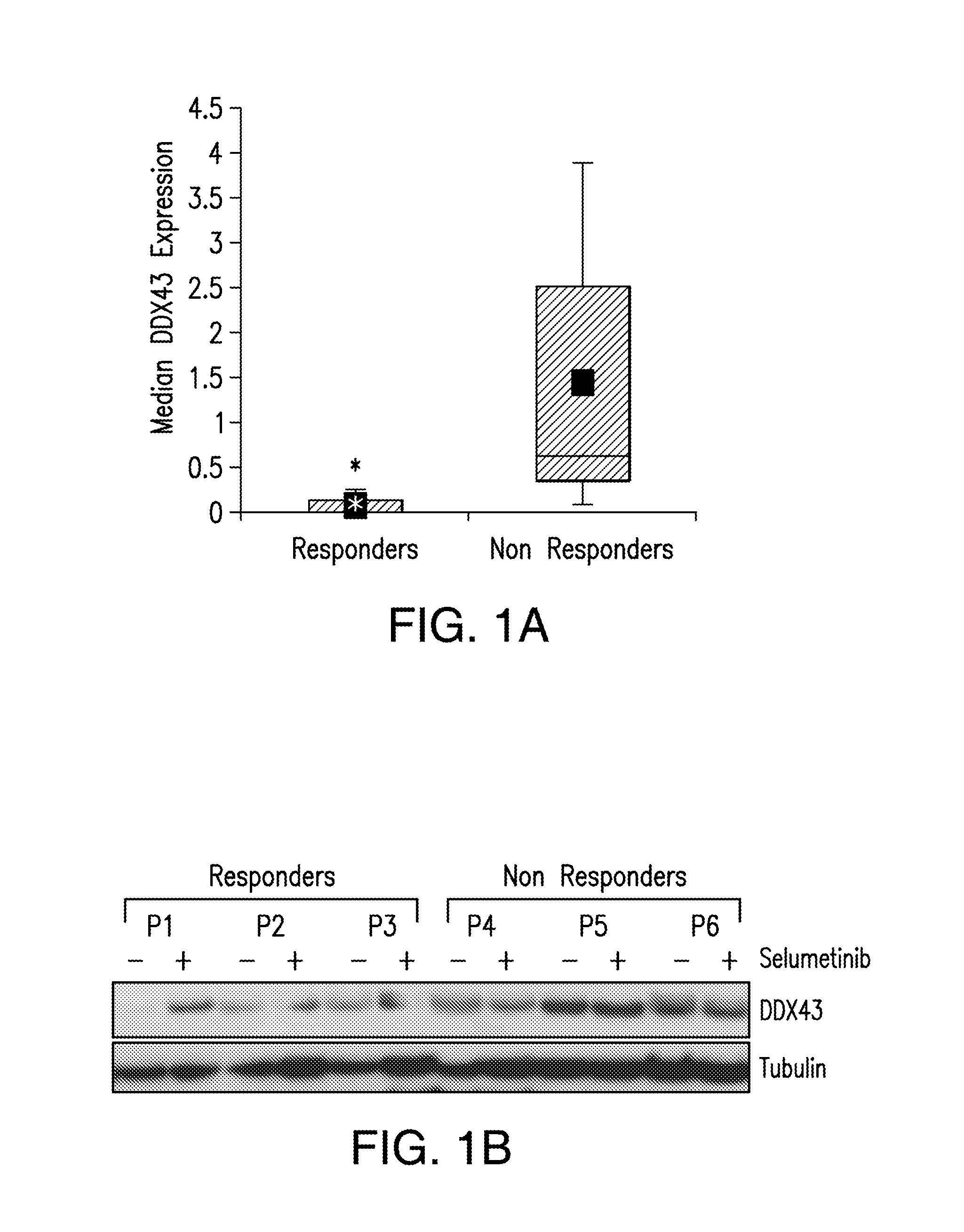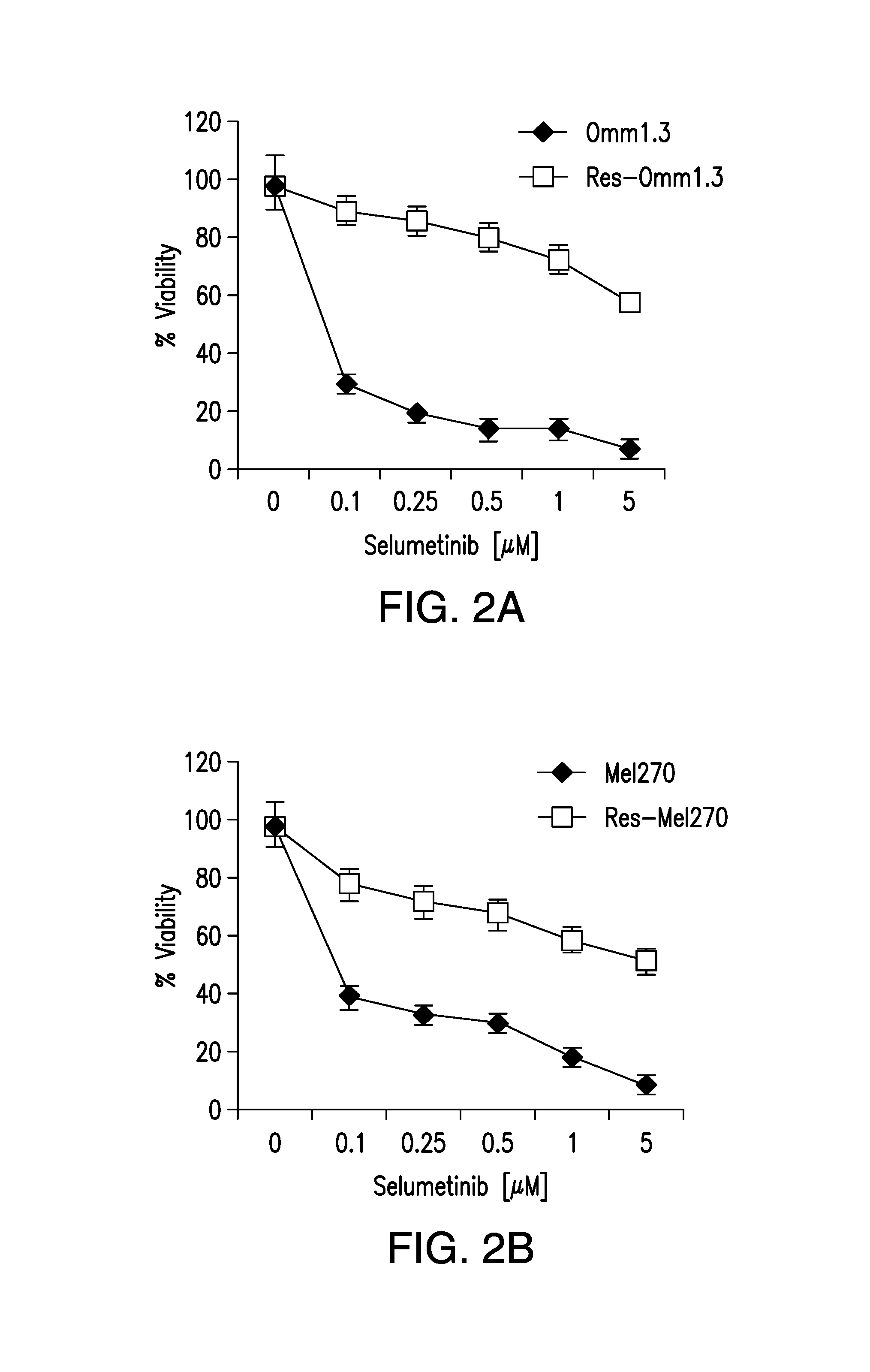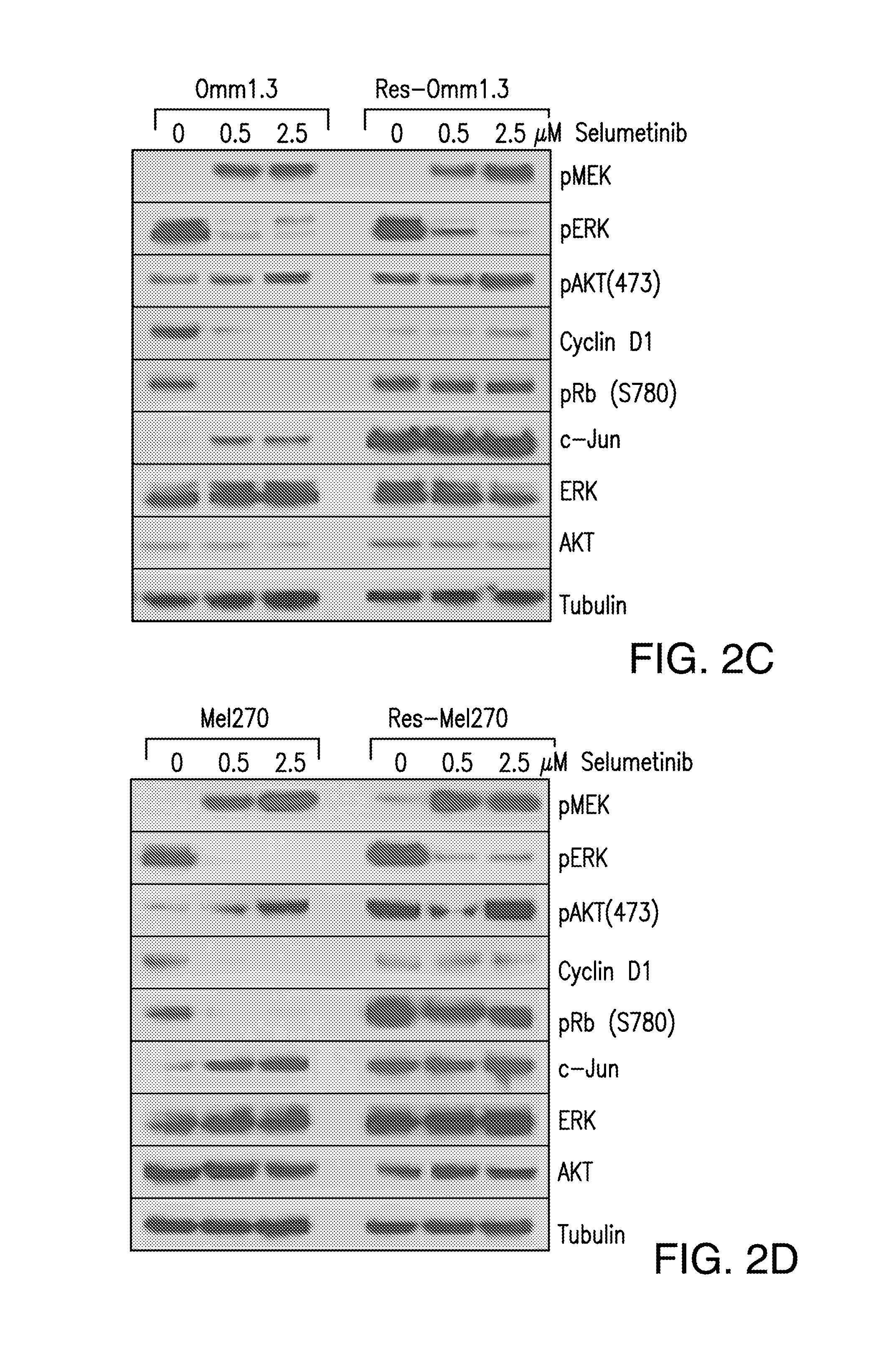Ddx43 as a biomarker of resistance to mek1/2 inhibitors
a biomarker and inhibitor technology, applied in the field of ddx43 as a biomarker of resistance to mek1/2 inhibitors, can solve the problems of reducing the efficacy of small molecule mek inhibitors in clinical settings, limited therapeutic options, and reducing the use of small molecule mek inhibitors, so as to increase the expression and activity of ras and high ddx43 expression
- Summary
- Abstract
- Description
- Claims
- Application Information
AI Technical Summary
Benefits of technology
Problems solved by technology
Method used
Image
Examples
Embodiment Construction
[0023]For clarity of disclosure and not by way of limitation the detailed description of the invention is divided into the following subsections:
[0024](i) DDX43 nucleic acids and proteins;
[0025](ii) cancers subject to the invention;
[0026](iii) MEK inhibitors;
[0027](iv) AKT inhibitors;
[0028](v) methods of assessing sensitivity to MEK inhibitors;
[0029](vi) methods of assessing sensitivity to AKT inhibitors;
[0030](vii) methods of measuring mRNA or proteins
[0031](viii) methods of treatment; and
[0032](ix) kits.
[0033]“Responder” and “non-responder” are used herein to refer to subjects having cancers that are antagonized by MEK inhibitors, and also are used to refer to the responsive or non-responsive cancers and cancer cells themselves.
5.1 DDX43 Nucleic Acids and Proteins
[0034]DDX43 nucleic acids include DNA and RNA comprising at least a portion of a DDX43 gene, a DDX43 mRNA, or a DDX43 cDNA or a sequence complementary or homologous thereto (including but not limited to antisense or small...
PUM
| Property | Measurement | Unit |
|---|---|---|
| tumor shrinkage | aaaaa | aaaaa |
| drug resistance | aaaaa | aaaaa |
| resistance | aaaaa | aaaaa |
Abstract
Description
Claims
Application Information
 Login to View More
Login to View More - R&D
- Intellectual Property
- Life Sciences
- Materials
- Tech Scout
- Unparalleled Data Quality
- Higher Quality Content
- 60% Fewer Hallucinations
Browse by: Latest US Patents, China's latest patents, Technical Efficacy Thesaurus, Application Domain, Technology Topic, Popular Technical Reports.
© 2025 PatSnap. All rights reserved.Legal|Privacy policy|Modern Slavery Act Transparency Statement|Sitemap|About US| Contact US: help@patsnap.com



